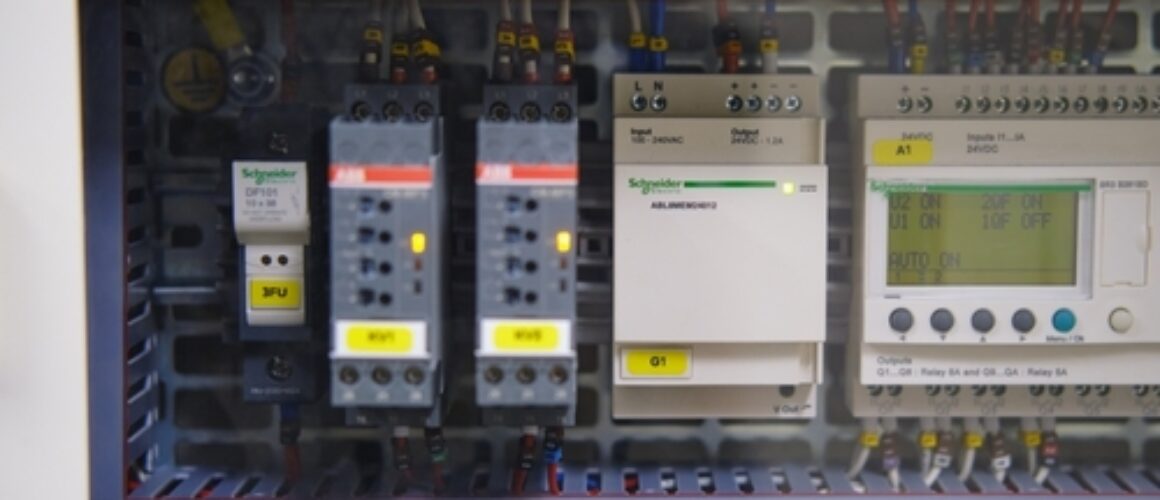Schneider’s Role in Advanced Distribution Board Technology
In an era where energy efficiency and smart infrastructure are becoming increasingly critical, Schneider Electric stands at the forefront of innovation. The company’s contributions to advanced distribution board technology are revolutionising the way we think about electricity distribution. Schneider’s cutting-edge distribution boards are not just about reliable power delivery; they integrate features like real-time monitoring, adaptive load balancing, and compatibility with renewable energy sources. These advancements are shaping the future of electricity distribution, making it smarter, more efficient, and more sustainable.
The Evolution of Distribution Boards
Traditional distribution boards have primarily focused on safely distributing electrical power from a source to various circuits within a building. However, with the advent of smart technology and the increasing complexity of modern electrical demands, the role of distribution boards has expanded significantly. Today, advanced distribution boards are integral to smart grid infrastructure, providing enhanced capabilities that go far beyond simple power distribution.
Real-Time Monitoring: Enhancing Efficiency and Reliability
One of the standout features of Schneider’s advanced distribution boards is real-time monitoring. This capability allows for continuous oversight of electrical systems, providing critical data on power consumption, load distribution, and potential faults. Real-time monitoring offers several key benefits:
- Proactive Maintenance: By continuously monitoring the performance of electrical systems, potential issues can be identified and addressed before they escalate into major problems. This proactive approach reduces downtime and maintenance costs.
- Optimised Energy Use: Real-time data enables more efficient energy management by allowing facility managers to identify peak usage times and implement strategies to reduce consumption during these periods. This not only lowers energy bills but also reduces the environmental impact.
- Enhanced Safety: Continuous monitoring helps in detecting anomalies such as overloads, short circuits, or unusual power consumption patterns. Early detection of such issues can prevent electrical fires and equipment damage, enhancing overall safety.
Adaptive Load Balancing: Meeting Dynamic Energy Needs
As electrical demands fluctuate, the ability to balance loads dynamically is crucial for maintaining system stability and efficiency. Schneider’s advanced distribution boards are equipped with adaptive load balancing technology, which adjusts the distribution of electrical loads in real-time based on current demand and available resources.
Benefits of Adaptive Load Balancing
- Improved System Stability: By ensuring that electrical loads are evenly distributed, adaptive load balancing prevents overloads and reduces the risk of power outages. This is particularly important in environments with high and variable energy demands, such as industrial facilities and data centres.
- Energy Efficiency: Adaptive load balancing helps in optimising the use of available power, reducing wastage, and improving overall energy efficiency. This is beneficial not only from a cost perspective but also for reducing the carbon footprint of electrical systems.
- Scalability: As businesses grow and their energy needs evolve, adaptive load balancing allows electrical systems to scale efficiently without the need for significant infrastructure upgrades.
Compatibility with Renewable Energy Sources
The transition to renewable energy is a critical component of global efforts to combat climate change. Schneider’s advanced distribution boards are designed to integrate seamlessly with renewable energy sources such as solar and wind power. This compatibility supports the development of sustainable energy systems and promotes the use of clean energy.
Key Features Supporting Renewable Integration
- Bidirectional Energy Flow: Schneider’s distribution boards can manage bidirectional energy flows, allowing them to handle both the consumption and generation of electricity. This is essential for systems that incorporate renewable energy sources, as it enables excess energy to be fed back into the grid.
- Energy Storage Integration: Advanced distribution boards are compatible with energy storage solutions, such as batteries. This allows for the storage of surplus renewable energy, which can be used during periods of low generation or high demand, enhancing energy security and reliability.
- Smart Grid Compatibility: Schneider’s technology supports smart grid infrastructure, which is critical for managing the complexities of modern electricity networks. Smart grids facilitate the efficient distribution of electricity, integrate renewable energy sources, and enhance grid resilience.
Shaping the Future of Electricity Distribution
Schneider Electric’s contributions to advanced distribution board technology are paving the way for a smarter, more efficient, and sustainable future in electricity distribution. By integrating features such as real-time monitoring, adaptive load balancing, and compatibility with renewable energy sources, Schneider is addressing the challenges of modern electrical systems and supporting the transition to a more sustainable energy future.
Conclusion
As we move towards a future where energy efficiency and sustainability are paramount, the role of advanced distribution boards will become increasingly important. Schneider Electric’s innovations are at the cutting edge of this evolution, offering solutions that enhance reliability, efficiency, and sustainability in electricity distribution.
To explore Schneider’s range of advanced distribution boards and learn how they can benefit your electrical installations, visit Electrical Discounted Supplies. Equip your systems with the latest technology to ensure a smarter, safer, and more sustainable electrical future.




